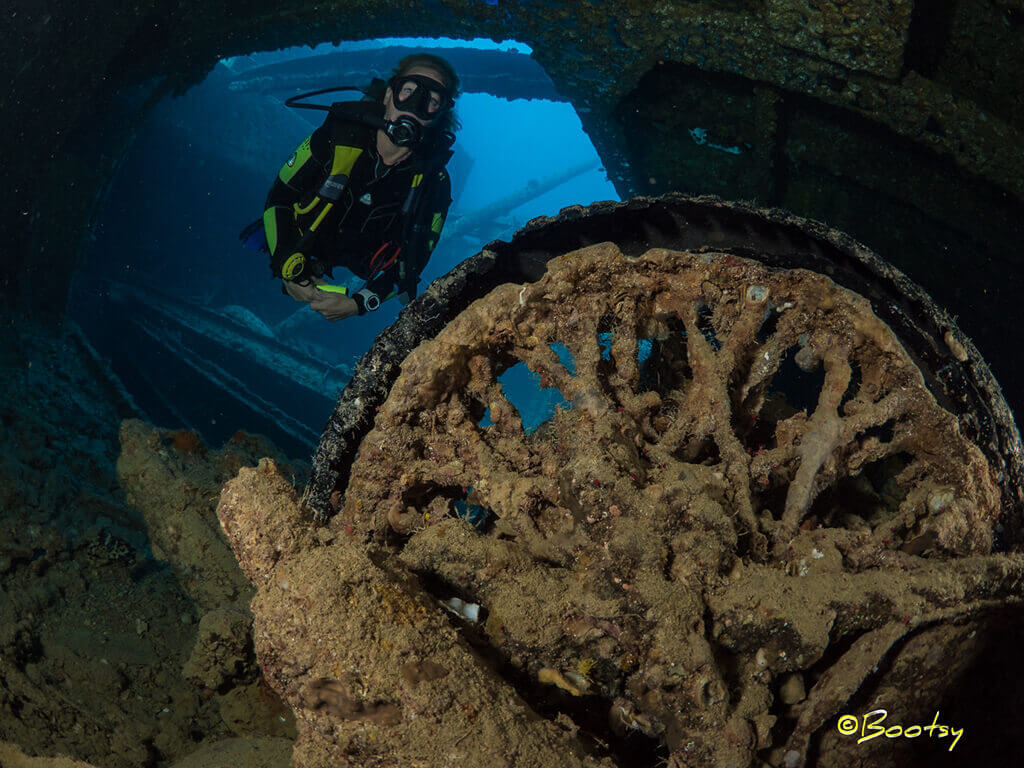There is something mysterious and exciting about a ship wrecked on the bottom of the sea that divers worldwide are drawn to. Wreck diving is definitely exciting and always a challenge to all levels of dive experience so here are our TOP TIPS for wreck diving:
Plan your dive and dive your plan
This applies to every dive but when wreck diving, special attention and care needs to be taken when planning your dive to help reduce potential problems that are specific to wreck diving.
Do not task load
Take your time and do not overload yourself on the dive. The wreck isn’t going anywhere anytime soon, so plan to do an orientation dive to familiarize yourself with the site. Plan another dive later to investigate points of interest on the wreck.
Be prepared
Make a thorough buddy check and make sure that both you and your buddy are trained to complete the wreck dive plan you are making.
Take additional equipment such as:
- A torch for lighting up dark areas of the wreck.
- A reel and line for marking your route around the wreck.
- Spare dive computer.
- Slate & Pencil for making a rough sketches, noting hazards & communicating with your buddy.
- Additional air supply like a hang tank on the line at 5 meters or a small pony bottle.
Don’t get complacent
Wrecks can have strong currents, tend to be deeper dives and usually cover large areas depending on the wreck and location. Staying close to your buddy and checking more regularly on air pressure as well as making sure you have an ample no decompression time throughout the dive is crucial to your safety. Determine a half way and a safety stop point on your dive and stick to it.
Tuck everything in
Streamlining your equipment, clipping in loose hoses and stowing extra equipment in pockets will greatly reduce the chance of you getting caught up on something inside a wreck.
If it feels wrong don’t do it
Diving should be safe above anything else. You know what your limits are so stick to them and don’t push yourself to go places you are not comfortable. If it feels wrong then say something and adjust the dive plan accordingly. If you find it doesn’t feel right when you are underwater then signal to your buddy.
Perfect your buoyancy and fin kick
You may need to maneuver in smaller spaces or areas where sediment or rust has built up and could reduce visibility if disturbed. Being comfortable with your buoyancy and using a fin kick such as the frog kick will make you more efficient on a wreck dive.
Don’t touch or take
You are diving on a piece of history that now belongs to the sea. It is important to respect and maintain the natural beauty of any wreck you dive on by not touching or damaging it in any way. The sea will eventually take over and make it its own natural reef which can only enhance your dive experience in the future.
Enriched Air
Complete your PADI Enriched Air course on your next trip. Wrecks can require you to stay at depth for longer (depending on the site). Diving with enriched air increases your no decompression time especially over multiple dives and in turn helps to avoid pushing your no decompression time limits on dives.
PADI Wreck Diver course
will teach you to expand your diving capabilities to include explorations of sunken ships, planes etc.
Once you’ve experienced a few wreck dives, your interest will only continue to grow.


